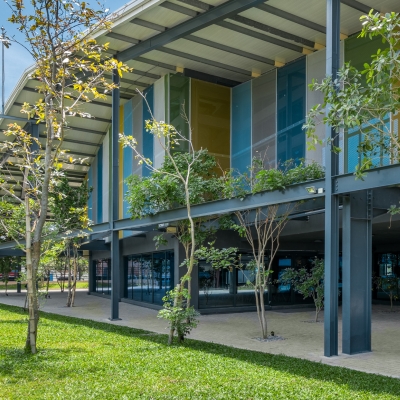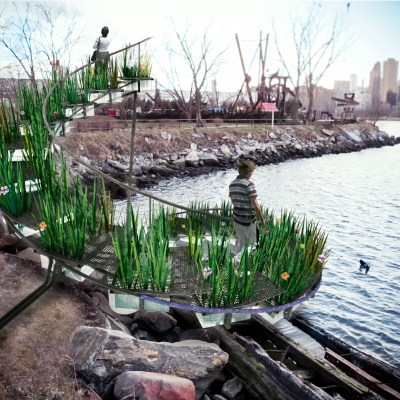Part 3 Circular Design - Efficiency
2024.04.17
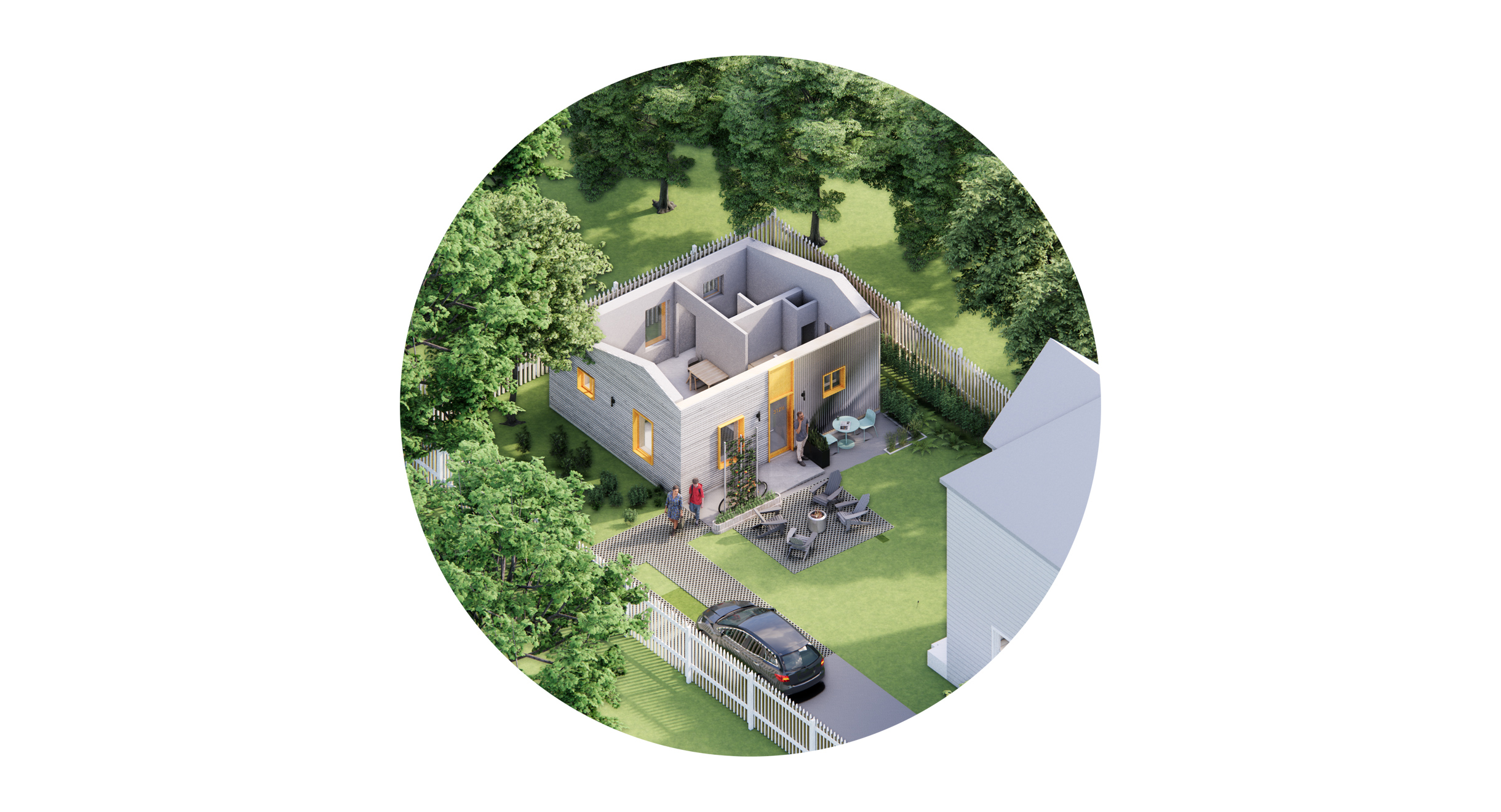
Welcome back to our series on Circular Design, an innovative way of thinking about sustainability, architecture and the built environment that prioritizes careful examination and prioritization of the specific necessity, efficiency, longevity and adaptability of structures and their components in the pursuit of a circular economy. In our last episode, we discussed the lens of Necessity, which emphasized making surgical and careful design decisions.
In this episode, we’ll be discussing our Excelsior ADU prototype as an example of how Efficiency in a circular design is achieved. Previously, we’ve defined efficiency in terms of the density of value embedded within a particular building component or design choice. This puts a particular emphasis on solutions that achieve multiple project goals in a single stroke. Our conception of efficiency focuses on the achievement of multipurpose designs whose composite value far surpasses the sum of its parts.
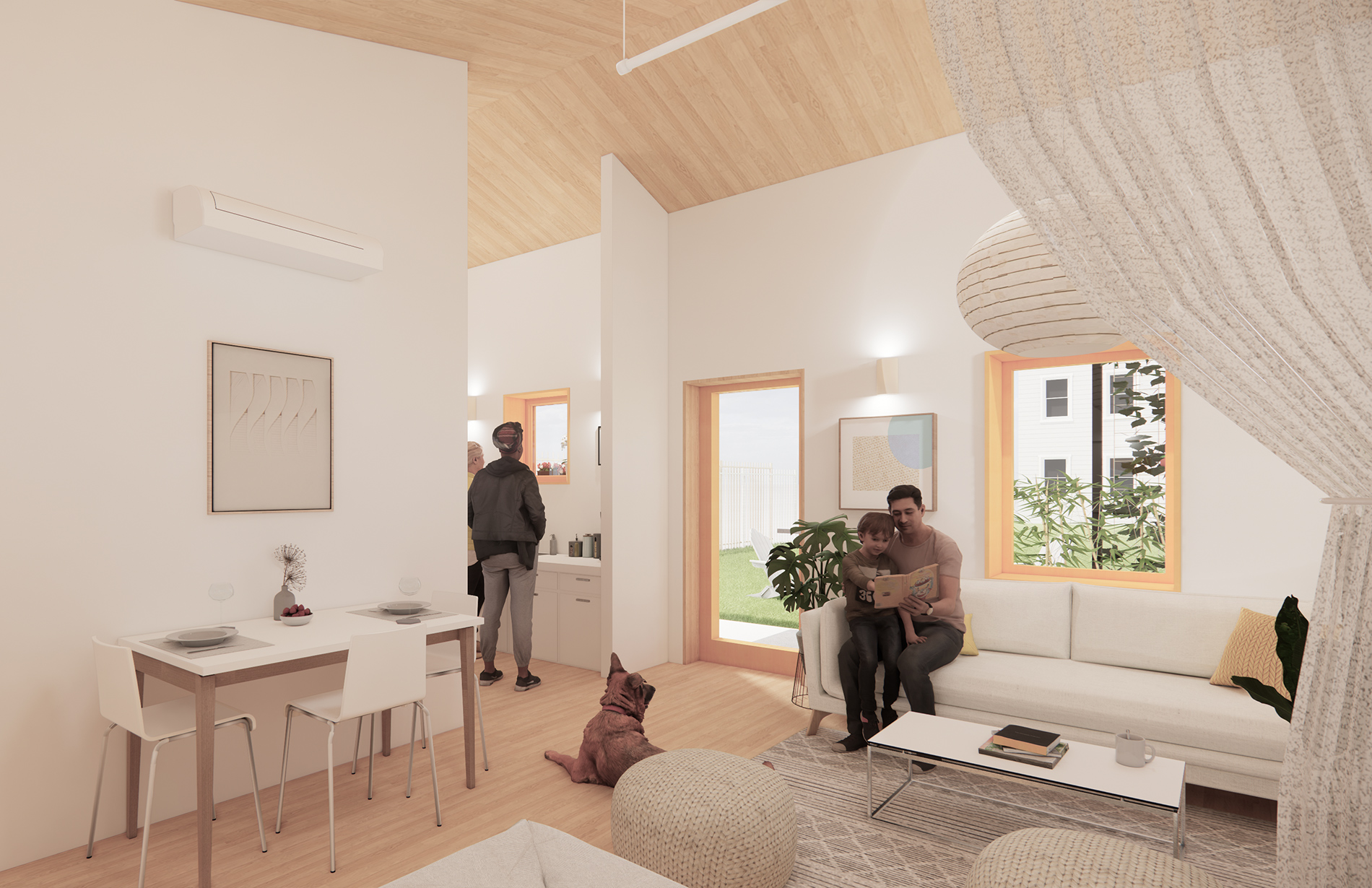
Efficiency focuses on the achievement of multipurpose designs whose composite value far surpasses the sum of its parts.
The ADU (Accessory Dwelling Unit) typology addresses numerous housing challenges simultaneously. As a small scale residential solution, the Excelsior ADU would increase gentle density in single family neighborhoods while housing supply and offering affordable options. Due to its relationship to a Primary Dwelling Unit, ADUs maximize value out of existing infrastructure. We believe that wide adoption of ADUs has the potential to create inclusive and accessible living opportunities for diverse communities.
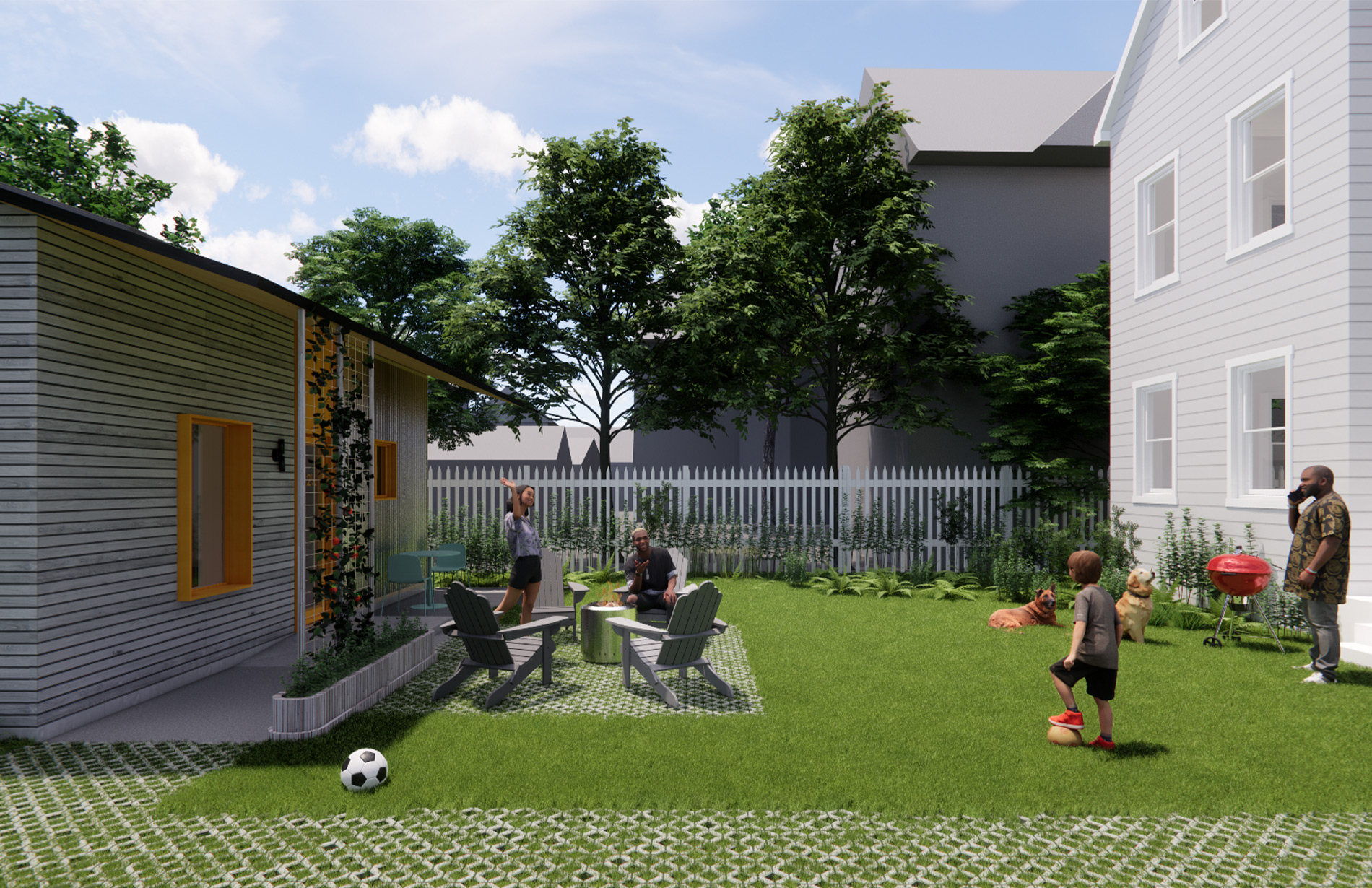
Due to its relationship to a primary dwelling unit, ADUs maximize value out of existing infrastructure.
Given the nature of an ADU, our prototype prioritizes compact and efficient floor plans, maximizing utilization within a small space. Dimensions for the project are tightly controlled to minimize offcuts and reduce plumbing, electrical, and HVAC runs through the implementation of a modular service core. As a fully ADA accessible structure, the Excelsior ADU opens up housing access in neighborhoods that would otherwise pose a challenge. By maximizing the value and functionality of living spaces, the ADU prototype seeks to offer comfortable and practical housing solutions within constrained urban environments.
The Excelsior ADU in particular maximizes value for occupants, owners and the environment by integrating energy-efficient technologies and sustainable materials in accordance with Passive House Standards. An efficient thermal envelope is developed through a simple double stud wall and utilizes recyclable, local materials for framing, insulation and finishes, complete with high performance windows and doors. In addition, Its design incorporates features such as heat pump HVAC and hot water systems. These solutions make the building highly sustainable with excellent interior air quality and noise isolation. The multifaceted benefits of Passive House in the Excelsior ADU increase its accessibility to more occupants while minimizing waste and promoting a circular economy.
The benefits of Passive House in the Excelsior ADU increase its accessibility to more occupants while minimizing waste and promoting a circular economy.
As a compact, accessible housing solution with a focus on ecological regeneration and operational sustainability, the Excelsior ADU thus embodies the efficiency ethos of circular design. It does as much as possible with as little as possible, creating a highly practical and environmentally friendly approach to a residential typology that seeks to increase efficiencies in its urban context.






